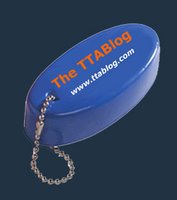Finding Fruit Juice and Coffee/Tea Related, TTAB Affirms 2(d) Refusal of COCO LOCO
Once again, third-party registration evidence established the relatedness of two different beverages, this time fruit juices on the one hand, and coffee and tea on the other. The Board affirmed a Section 2(d) refusal to register COCO LOCO for fruit juices in view of the registered mark THE CRAZY COFFEE COCO LOCO ESPRESSO and Design (shown below) for coffee and tea [COFFEE, COCO, and ESPRESSO disclaimed]. Applicant argued, without success, that "The Crazy Coffee Company" is the dominant part of the cited mark, but the Board found that the mark contains two "memorable and distinctive elements," the other being the COCO LOCO ESPRESSO logo. In re Beuno Alimentos, S.A. de C.V., Serial Nos 76676618 (May 29, 2012) [not precedential].

Procedural issue: Examining S. Michael Gaafar initially cited two pending third-party applications as potential 2(d) bars, but then in a suspension order listed only one of the two applications. When that application went abandoned, prosecution resumed, and the Examining Attorney made the 2(d) final as to the other cited application when it issued to registration. Applicant cried foul, arguing that the possible citation of that second pending application had been withdrawn.
The Board noted that the TMEP does not clearly state that an Examining Attorney must cite all potential references in a suspension order. Moreover, Applicant was not harmed by the omission, since it had an opportunity to argue against the refusal based on the second reference. The Board noted the PTO's duty to issue valid registrations and its broad authority to correct errors made by Examining Attorneys. The Board concluded that "the examining attorney followed proper examination procedure" and therefore ruled that the PTO was not estopped from refusing registration in view of the second cited mark.
Likelihood of confusion: Applicant translated its mark as "the crazy coconut" while Registrant translated COCO LOCO ESPRESSO as "crazy coffee." The latter is not a literal translation, since "coffee" in Spanish is "cafe," and presumably "crazy coffee" is the commercial impression that Registrant is attempting to convey. In any event, the Board found that the cited mark includes two memorable and distinct elements, one being COCO LOCO ESPRESSO. Comparing that mark with COCO LOCO, the Board found them to be similar in appearance, sound, meaning and commercial impression.
As to the goods, the Examining Attorney relied on numerous use-based third-party registrations that list both fruit juices and coffee or tea in their identifications of goods. Excerpts from various websites also showed tea and fruit juices sold under the same mark (e.g., SNAPPLE, NANTUCKET NECTARS). Applicant feebly argued that tea, coffee, and fruit juices are completely different products, but the Board sagely pointed out that the issue here is confusion as to source, not confusion between the products themselves.
The Board therefore found confusion likely and it affirmed the refusal to register.
Text Copyright John L. Welch 2012.




















































